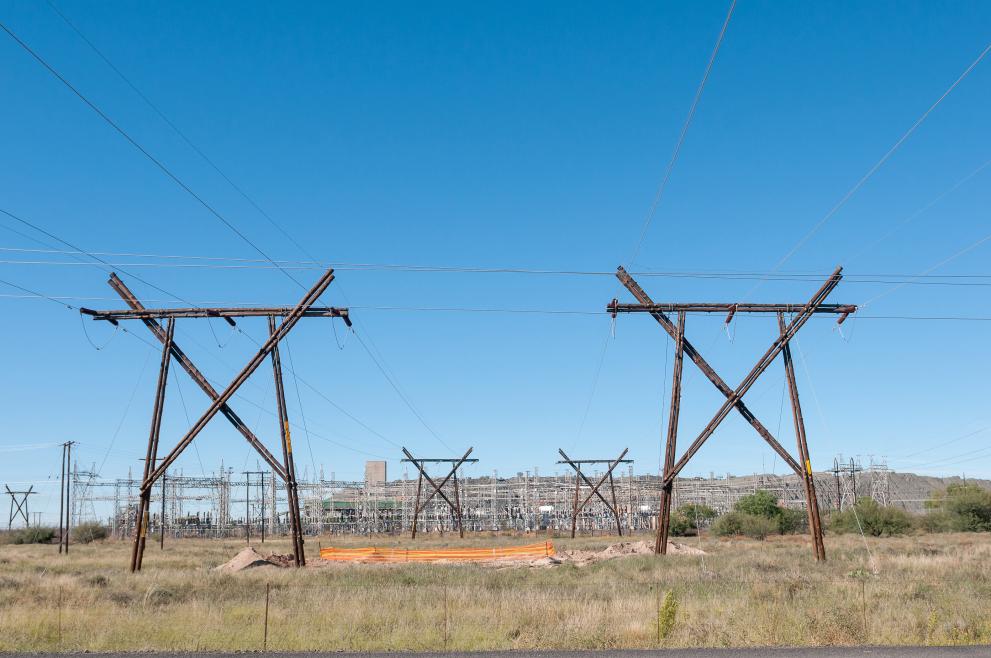
In 2015, the majority of Africans lacked access to electricity. With an electrification rate of 43%, Africa has by far the lowest rate in the world.
A joint study published in IOPscience finds that the investment required to provide access by 2030 to the 1.1 billion people living in Sub-Saharan Africa ranges from $50 billion with a low level of electrification and low diesel price, to $1.3 trillion with high diesel prices and the highest level of electrification.
That's a considerable cost difference – from just under $50 to over $1000 per person – so identifying the most cost-effective strategies is vital to ensuring that electrifying the subcontinent is affordable.
The study combines geospatial information systems (GIS) tools and energy system modelling in an Open Source Spatial Electrification Toolkit (OnSSET), to identify least-cost electrification strategies for 44 Sub-Saharan countries.
10 alternative scenarios –from low to high diesel prices and 5 tiers of electrification – were applied to 25.8 million locations.
With the cost of diesel likely to increase in the coming years as a result of environmental policies, the study maps prospective solar, wind and hydro power generation levels across the subcontinent. Initial findings include:
- South Africa, the Democratic Republic of Congo and Sudan have a relatively high hydro power generation potential – from around 2000-3000 Mega Watts (MW).
- Countries like Somalia and Zambia have a relatively low hydro power generation potential but relatively high solar power and wind power generation potential.
Calculating electrification options and costs
Depending on the scenario, least-cost electrification strategies can be:
- Building the infrastructure to connect the area to the country's centralised electricity grid
- Smaller scale generation, with localised mini-grids running off solar, wind, hydro or diesel generation
- Stand-alone solutions, with direct, off-grid electricity generation
The report highlights that stand-alone technologies (solar or diesel generation) are the best option when demand for electricity is low, but as electricity demand increases, connecting to the centralised grid or establishing a mini grid become more cost-effective.

This is due to scale and operating cost considerations: the fixed cost of the grid infrastructure of centralised power plants is divided by increasing generation volumes, resulting in a lower cost per unit.
Furthermore, the most cost-effective mini grid systems move from diesel to solar and hydro systems when the level of electrification increases.
Density and distribution of population are also key elements in choosing the electrification technology. Density is particularly important because it affects the connection costs.
For example, in relatively highly-populated areas in Nigeria and Ethiopia, the most cost-effective strategy becomes grid connection as levels of electrification increase from tier 1 to tier 3.
Central grid connection becomes the most cost-effective strategy for most of West Africa at Tier 5.
Towards the UN's 2030 Sustainable Development Goals
The electrification strategies identified in the report will help to contribute to the UN's 2030 Sustainable Development Goals, of which "Ensuring access to affordable, reliable, sustainable and modern energy" is the 7th.
As electrification planning is deeply linked with the territory and its geographical features, GIS and open datasets are becoming increasingly important.
The electrification analysis takes account of specific information such as renewable energy flows, hydro power sources, population distribution and distance from the nearest electricity grids.
The JRC contributed to a map that provides - for the first time - estimated hydro power potential for the entire subcontinent, with river flow information derived from the Global Streamflow Characteristics Dataset (GSCD) and the LISFLOOD simulation model for Africa.

Hydro power potential is strictly bound with water availability, so assessing future water resources is very important. The JRC's model confirms that countries with higher water resource, like the Democratic Republic of Congo and South Africa, have a higher hydro power potential than drier countries like Mauritania and Mali.
The GSCD provides global maps of 17 streamflow characteristics, including base flow index, runoff coefficient, and flow timing, the drainage basin of the land. The LISFLOOD model simulates the hydrological processes that occur in a catchment.
The report comes from researchers of the JRC, the Royal Institute of Technology in Stockholm, the World Bank, Austria's International Institute for Applied Systems Analysis (IIASA), Columbia University's Centre for Global Energy Policy, United Nations Department of Economic and Social Affairs and ABB.
Related Content
Details
- Publication date
- 5 December 2017
